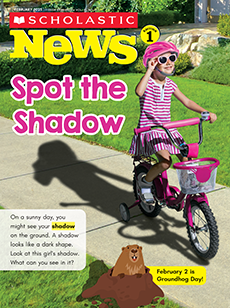A guide for using our resources
Children will identify the characteristics of narwhals that are known to scientists, and one that remains a mystery.
Vocabulary: narwhal, mysterious, blubber, pods, tusk
Science Focus: arctic animals
CCSS and Similar State Standards: RL.1.1 key details; RF.1.2 consonant blends; RF.1.2 digraphs; W.1.2 writing; RI.1.10 read and discuss first-grade texts; SL.1.2 ask and answer questions
Simple, spectacular ideas to boost your lessons.
Paired Text Suggestion: Narwhal: Unicorn of the Sea by Ben Clanton
Paired Text Suggestion: Narwhal: Unicorn of the Sea by Ben Clanton
- Enjoy three stories with this early introduction to graphic novels. Students will love the two friends, Narwhal and Jelly, as they follow their silly adventures!
Phonics Focus: Voiced vs. Unvoiced th sound
Phonics Focus: Voiced vs. Unvoiced th sound
- Tell students that sometimes the way we say th can sound different. Write down the words this and tooth. Underline the th in both words. Practice saying both words. Can students hear or feel a difference? This uses a voiced th. Tooth uses an unvoiced th. Have students circle each word in the article that has th in it. Ask students to tell where they found the word, and as a class, practice saying it aloud. Does the word use a voiced or unvoiced th?
Hands-On Activity: Make a Narwhal
Hands-On Activity: Make a Narwhal
Skill: writing, fine-motor
Materials: Make a Narwhal skill sheet, scissors, paper plates, glue, markers
- Students will create their very own narwhal and write what they learned about these mysterious creatures!
- Cut paper plates in half. Give each student half a paper plate and a Make a Narwhal skill sheet. Review each body part on the skill sheet. Then provide scissors and glue. Allow students to cut out each part and attach it to the paper plate to create their own narwhal.
- Once all parts of the narwhal have been put together, ask students to think about something they learned about narwhals. Have them write own their fact on the sentence strip and glue onto their narwhal body.
